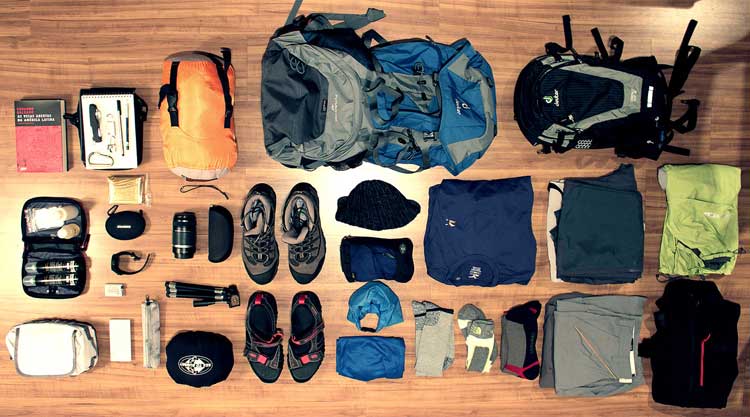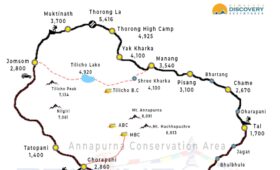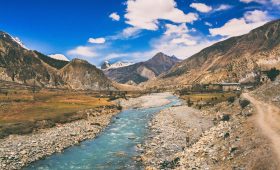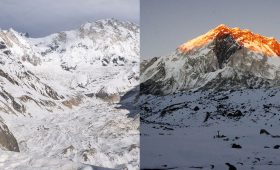No sooner you think about trekking in any region, your mind makes a list of all the things that you are going to need in order to have a successful trek. Annapurna Base Camp trek packing list, many people only think of the outer covering of their body, but there is so much to take care of rather than simply your clothing.
Annapurna Base Camp is one of the most popular trekking routes in Nepal. Second only to the Everest Base Camp trek in terms of the wonder it creates and scaled by two-thirds of all the trekkers who come to Nepal, Annapurna Base Camp trek is a wonderful journey in the Annapurna Sanctuary.
Needless to say, this base camp of the gorgeous Annapurna Mountain is cold. And that is not the only thing to take care of. The altitude means that several things such as your sleeping gear, boots and other items need to be taken care of.
Before looking at the list of items that you need to pack before trekking in the Annapurna Base Camp, let us take a look at a few things to give you a general idea of what you need to expect in this trek:
Annapurna Base Camp Packing List
Now that you know about the length of time you are going to spend in the Annapurna region and the climatic conditions you are going to encounter, let us take a look at the list of all things you are going to need to pack for trekking in the Annapurna Region.
Clothing
Base Layer
The Base layer is extremely important when you reach the highest points along the trek as the highest points tend to be the coldest of them all. So you will not wear this layer during the beginning of the trek or at the end.
The base layer needs to be fit and comfortable as it is the layer that is the closest to your body and it also plays a part in how well the other outer layers fit as well.
Second Layer
The layer of clothing just outside the base layer is the second layer. It is also known as the insulation layer. Fleece is the material that is mostly used for the construction of clothes that make up the second layer.
The insulation layer is available for both the upper and lower parts of the body. But the insulation layer for simply the upper part of the body will be enough for the trek.
Outermost Layer
The third and the outermost layer becomes the most important of all the layers because it is often the thickest and helps keep snow as well as the extreme cold in the base camps at bay,
There will also be chances of rain while you are trekking at high altitudes. You have to carry a waterproof down jacket. It will also be the most expensive of all the layers.
General Trekking Gear
In addition to the three layers discussed above, you will also need the following:
- A pair of hiking trousers and hiking shorts.
- Lightweight nylon or polyester trekking shirts to wear will be needed.
- Waterproof shell jacket and trousers will come in handy in case it rains as there might be seasons where you encounter rain as well.
- 4 pairs of sports underwear for women as well as men.
Headwear
Headwear needs to protect your from the sunlight, or cold that you will encounter at the Annapurna Base Camp region.
- You should carry a trekking hat with a brim that will keep the effect of the sun away.
- A woollen hat for keeping your head warm during the cold.
- A balaclava will be perfect to protect your neck region irrespective of the seasons. If you are looking for something that is lightweight, you can try out a scarf or a face cover.
Gloves
Fingers are fragile and often take a lot of time to warm, so you need the following types of gloves:
- Wearing inner gloves will come in handy when the temperature is mild. Wearing only the inner gloves will allow you to search through your backpack or simply tie your shoelaces.
- Your outer gloves when waterproof and durable will offer your fingers a lot of warmth.
Footwear
You will need various kinds of footwear depending on the places that you go to as well as rest in.
Hiking Boots
Trekking boots that are comfortable to wear, have great grip and offer your ankles a lot of support will be indispensable. That ensures that even in the most difficult of trails, you will have a wonderful time trekking.
Besides, you need to make sure that the boots are neither too big nor too small. Also, don’t go for heavy boots. You will be walking for a minimum of 10 days in the Annapurna region.
Trekking Shoes
Trekking shoes will not be helpful while trekking in the Annapurna Base Camp as hiking boots offer a lot of comfort and safety compared to trekking shoes. But you will need light footwear while strolling in teahouses after you rest.
If you are into sandals, you can also look for trekking sandals with or without socks.
Socks
There will be two types of socks that you will need:
- Good hiking socks generally keep the moisture away and will be comfortable to wear in the lower altitudes.
- Thermal socks will be important in very high altitudes with low temperatures such as the Base Camp.
Bags
Bags will contain most almost all your items. So they need to have a lot of space to carry your items. You can carry either of the following bags:
Duffel bags
If you want your bags to be carried by porters, a duffel bag will be the best option to choose from. Just make sure that your bag is durable, waterproof and can be locked.
Backpack
If you don’t want to hire a porter, a backpack will be the best option to have. Around 40-60 litres backpack will accommodate all your belongings. An opening at the top will come in handy to maneuver things.
Daypack
A daypack will store the items that you will need regularly such as your camera, water or items you can munch on. Even if you give your duffel bag to the porter to carry, your daypack will make things easier to move around.
Raincover
While preparing for the trek you should consider what you will need while rain interrupts your trek. And that includes a rain cover that will prevent your bag from getting wet.
Sleeping Gear
Sleeping Bags
The tea houses along the treks do provide you with a mattress as well as blankets. But they might not be enough for you. So, what do you do? Buy or rent a sleeping bag. Your bag should fit your body. It should also provide a hood for warmth.
Additional Sleeping gear
Additional sleeping gear will consist of a liner that facilitates a healthy environment for the purposes of resting. Earplugs will come in handy to nullify the effect of the sound of other people.
Skin Protection
At high altitudes, the UV rays will affect your skin greatly. So you will need the following items:
- Sunscreen will help keep your skin protected from the UV rays, whose effects become pronounced in high altitudes.
- In the summers, you will have to minimize the risk of bites of mosquitoes as well as leeches. Carry a mosquito repellent to keep away the mosquitoes and some table salt to rub in leech-infected area of your body.
- Carry a pair of sunglasses that will reduce the amount of UV light.
Miscellaneous
- Trekking Poles reduce the amount of strain on your body while trekking. It comes in especially handy if you suffer from muscle and bone aches.
- A Headlight will come in handy if you have to move around in the dark in the places where you spend your night after trekking.
- Water bottles will be useful to store water. Lack of proper hydration is the biggest cause of altitude sickness in the Base Camp region. Carry 2-3 one-litre water bottles.
- Towel to dry yourself after you have freshened up.
- Electronic gadgets such as smartphones, DSLRs, and GoPros will help you document your travel experience and cherish in the future.
- Solar Chargers will also be necessary to carry as you might be stranded for hours in the charging queues.
- Cards and (e)Books will be your escape from any boredom you might feel in the tea houses.
 Tips for the Annapurna Base Camp Trek
Tips for the Annapurna Base Camp Trek
In order to make your trek comfortable you can take the following measures:
1. Hire a guide/ porter
Guides and porters who share your experience, as well as physical and mental stress, will come in handy when you are experiencing difficulties while trekking.
2. Get a travel Insurance
There are plenty of things that can go wrong while trekking ranging from altitude sickness to muscle aches, cuts and bruises, theft of bags and flight cancellation. A travel insurance is cheap and will ensure you and your belongings are taken care of.
3. Go Slow
Don’t take your trek as a competition. Going slow with regular intake of an appropriate quantity of food and water will guarantee that your health is in good shape to complete the trek.
Conclusion
Annapurna base camp packing list, as long as you pack well and pack smartly, there is no way that you are going to have problems while trekking in the Annapurna region. Make sure that you have double-checked all the items before you undertake your trekking.
Do you have any question about trip to Nepal?
Tell us about your trip to Nepal and what you expect from it. We will answer your questions in 24 hours and help you design a trip with a comfortable itinerary to best meet your needs.





